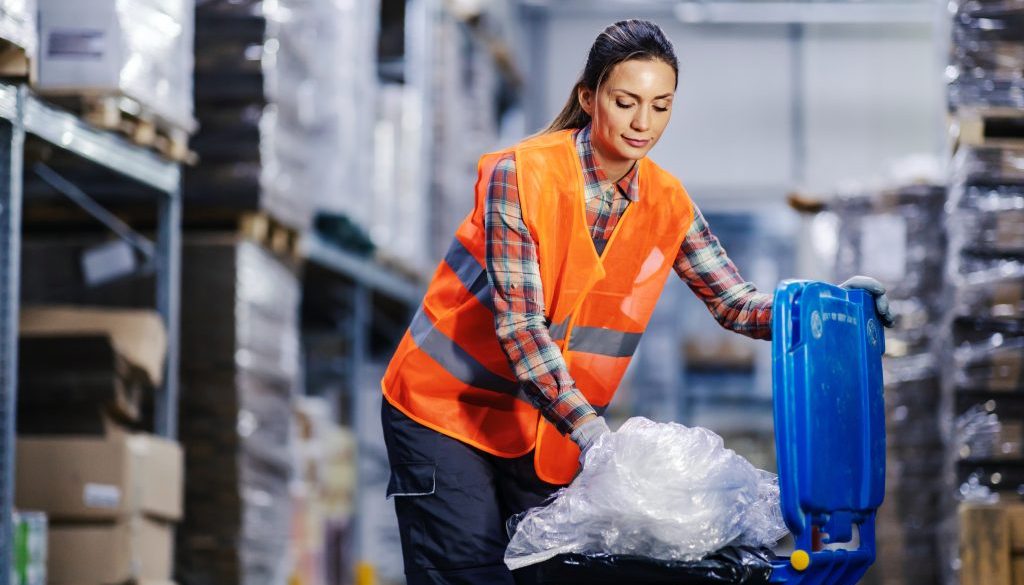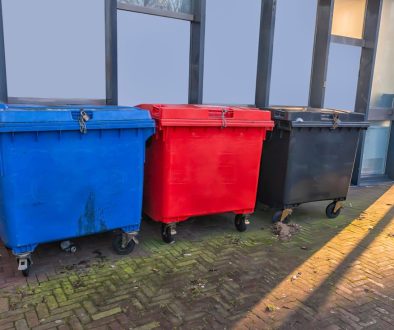Waste production is a significant environmental concern that has been on the rise, and in recent years, waste management has become a global issue that affects our environment, living conditions, and health. It’s important to recognise that waste production is not solely a household problem because businesses also contribute significantly to overall waste generation.
Businesses produce a variety of waste types that can be harmful to the environment. Commercial waste is any waste produced by companies, institutions, or organisations, and as it differs from household waste it requires specialised handling, disposal, and management. Moreover, the government regulates commercial waste in the UK, and businesses must comply with specific guidelines to ensure their waste is disposed of safely and responsibly. Although this may seem logical, the issue goes deeper than one might realise. For this reason, we will discuss the details in this article.
What Is Commercial Waste?
Commercial waste is any waste produced by businesses, institutions, or organisations, including discarded materials during production, manufacturing, or distribution. Commercial waste differs from household waste because it requires specialised handling, disposal, and management. The types of commercial waste generated depend on the type of business and the activities carried out, so it’s often complicated to classify them all.
Commercial waste is generally categorised as the following:
Paper
Paper waste is one of the most common types of commercial waste generated. Paper waste is generated from offices, schools, and other organisations that use paper products. Paper waste can be recycled, and it’s vital to dispose of it correctly.
Cardboard
Cardboard is another common type of commercial waste generated. Cardboard is used for packaging and shipping, and it is also recyclable. Recycling cardboard can help reduce the amount of waste in landfills.
Furthermore, cardboard waste is also often used to create new paper products, making it a valuable material to recycle. Businesses can reduce their cardboard waste by implementing practices such as reusing boxes and reducing packaging materials.
Food Waste
Food waste is a significant problem globally, and the commercial sector is a significant contributor. Restaurants, hotels, and other food establishments generate large amounts of food waste daily. Food waste can be composted, which can help reduce the amount of waste in landfills and provide valuable nutrients to the soil.
Retail Packaging
Retail packaging waste is generated from the packaging of products sold in stores. This waste includes plastic, cardboard and other packaging materials. Retail packaging waste is not only harmful to the environment, but it also contributes significantly to the amount of waste generated.
Electronics
Electronic waste is a significant problem for businesses. Electronic waste includes computers, televisions, and other electronic equipment that is no longer in use. Electronic waste contains hazardous materials that can be harmful to the environment. It is essential to dispose of electronic waste appropriately to reduce its impact on the environment.
Construction Waste
Construction waste is generated from building sites and construction projects. Construction waste includes concrete, bricks, and other building materials. Construction waste is heavy and bulky, and it can be challenging to dispose of correctly.
Hazardous Materials
Hazardous waste is any waste harmful to the environment or human health. Hazardous waste includes chemicals, batteries, and other materials that contain toxic substances. Hazardous waste requires specialised handling and disposal to prevent environmental and human health harm.
The Waste Hierarchy
The waste hierarchy is a framework that prioritises waste management strategies based on their environmental impact. The waste hierarchy includes the following strategies, ranked in order of preference:
- Prevention: The most effective way to manage waste is to prevent its generation in the first place. This can be achieved by reducing the materials used, improving product design, and implementing sustainable practices.
- Reuse: Reusing materials is the next best option. This involves finding new uses for materials that would otherwise be discarded, such as repurposing old furniture or using plastic containers for storage.
- Recycling: Recycling involves converting waste into new materials. This can help reduce the amount of waste in landfills, conserve natural resources, and reduce greenhouse gas emissions.
- Recovery: Recovery involves using waste as a source of energy or fuel. This can be achieved through processes such as incineration or anaerobic digestion.
- Disposal: Disposal is the least desirable waste management option. This involves sending waste to landfills or other disposal facilities, which can negatively impact the environment and human health.
The Importance of Reducing Commercial Waste
Reducing commercial waste is crucial for several reasons. First and foremost, reducing commercial waste helps to conserve resources. When businesses reduce the amount of waste they produce, they also reduce the resources they use. This helps to conserve natural resources, such as trees, water, and energy.
Additionally, reducing commercial waste helps to reduce the amount of waste that ends up in landfills. Landfills are harmful to the environment because they emit methane gas, a potent greenhouse gas contributing to climate change. Reducing the amount of waste that ends up in landfills helps minimise the impact on the environment.
In the long term, reducing commercial waste can help businesses save money. When companies reduce the amount of waste they produce, they also reduce the amount of money they spend on waste disposal. This can help businesses save money and increase their profitability.
How to Reduce Commercial Waste
There are several ways that businesses can reduce the amount of waste they produce.
Waste Reduction
Waste reduction involves reducing the amount of waste generated at the source. This can be achieved by using less, reusing, or alternative materials. For example, businesses can reduce paper waste by printing double-sided, reducing margins, and using digital documents instead of paper.
Reduce, Reuse, Recycle
Reducing, reusing, and recycling are among the most popular waste reduction methods. This method involves reducing waste generated, reusing materials where possible, and recycling materials that cannot be reused. Businesses can implement a recycling program that includes paper, cardboard, and other materials.
For example, if a business generates a lot of cardboard waste, it can partner with a local recycling facility instead of sending it to a landfill. Additionally, they can encourage employees to bring reusable water bottles and coffee cups instead of disposable ones, significantly reducing plastic waste.
Sell Items When Possible
When businesses no longer use products, they can sell them instead of throwing them away. This can reduce waste and generate revenue for the company.
Many companies accept used items for resale, such as furniture, electronics, and office supplies. Some businesses even have a designated area or website for selling used items to employees or the public. By selling items instead of throwing them away, companies can reduce waste, support sustainable practices, and make a profit. It’s a win-win situation for the environment and the business’s bottom line.
Invest in Durable Equipment
Investing in durable equipment can reduce the amount of waste that businesses generate. Durable equipment lasts longer and requires less maintenance, reducing the need for replacements and repairs.
For example, if a company invests in high-quality, durable office chairs, they won’t need to replace them as frequently as they would with cheaper, less durable chairs. This not only reduces waste but also saves money in the long run.
Choose Eco-Friendly Supplies
Using eco-friendly supplies can also help reduce waste in the workplace. Switching to products made from sustainable materials, such as recycled paper or biodegradable plastics, can significantly reduce a business’s environmental impact.
Additionally, businesses can opt for digital alternatives to paper-based products, such as digital receipts and online invoicing. This reduces waste and saves money on paper and printing costs.
When Is Incineration Necessary?
Incineration, or burning waste materials, is considered a last resort and only necessary in certain circumstances. Some waste materials, such as chemical waste or medical waste, can be dangerous if not correctly disposed of. Incineration can be a safe and effective way to dispose of hazardous waste.
On the other hand, incineration can also reduce the amount of waste sent to landfills. This is particularly useful in areas where landfill space is limited or where the cost of transporting waste to a landfill is high.
Conclusion
Waste production from businesses is a significant environmental concern that requires attention. Because of this, companies must be proactive and implement waste reduction strategies to minimise their environmental impact. This way, commercial waste is managed efficiently and responsibly.
Enviro Skip Hire is for you if you’re looking for a skip hire in Crewe! We offer various selections of skips, from small ones to large ones that can hold the equivalent of more than 300 bin bags. Call us today at 01270 820 426 to make a reservation!




